When Is the Right Time to Till Your Garden Soil?
- February 26, 2024
- 0 comment
Gardening is not just a pastime it’s a journey of constant learning and growth, both for the garden and the gardener. My decision to till my garden was one that came after much contemplation, research, and a deep-seated desire to enhance my garden’s health and productivity.
What Is Tilling?
Tilling is a gardening and agricultural practice that involves turning over, breaking up, and aerating the soil. This process is usually performed with a tool or machine known as a tiller, which can range from simple hand tools for small garden beds to larger, motorized equipment for extensive agricultural fields. The primary purpose of tilling is to prepare the soil for planting by creating a looser, finer soil structure that facilitates the easier establishment of plant roots. Additionally, tilling helps to remove weeds, incorporate organic matter into the soil (such as compost or manure), and improve soil aeration and drainage.

Beyond these immediate benefits, tilling can also help in managing soil health by bringing nutrients from deeper layers of the soil to the surface, where they can be more readily accessed by plants. However, it’s important to note that excessive or improper tilling can lead to soil compaction, loss of soil structure, erosion, and the destruction of beneficial soil organisms. As such, many gardeners and farmers weigh the benefits of tilling against its potential downsides, often opting for minimal tillage techniques or no-till methods to maintain soil health and function over the long term.
Downsides of Tilling
Disruption of Soil Structure
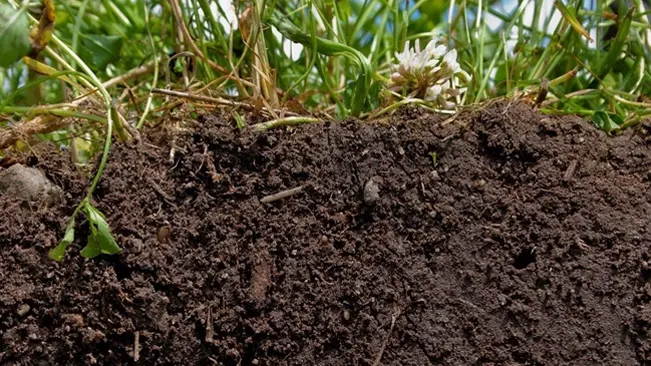
Tilling breaks apart the soil’s natural structure, disrupting the delicate balance of air and water pockets that facilitate root growth and water infiltration. This disturbance can lead to soil compaction, especially just below the tilled layer, creating a hardpan that roots struggle to penetrate. Over time, this reduced soil structure can negatively impact plant health and reduce crop yields.
Loss of Soil Organic Matter
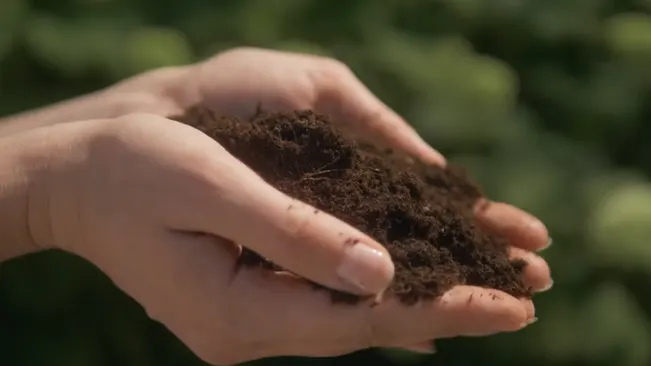
The process of tilling accelerates the decomposition of organic matter by exposing it to air. While this can temporarily increase nutrient availability, it also leads to a rapid depletion of organic matter over time. A decline in organic matter reduces the soil’s ability to retain moisture and nutrients, making it less fertile and more susceptible to erosion.
Erosion and Runoff
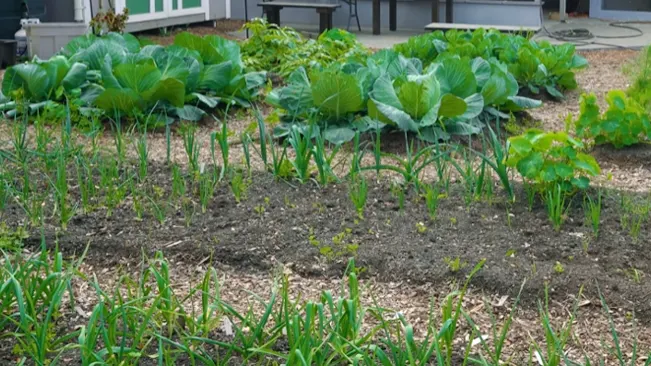
Tilling leaves the soil surface bare and vulnerable to wind and water erosion. This not only leads to the loss of topsoil, which is rich in nutrients and organic matter, but also contributes to water pollution as soil particles carry fertilizers and pesticides into nearby waterways. Erosion can significantly degrade land quality and reduce agricultural productivity.
Disturbance of Soil Microbiome
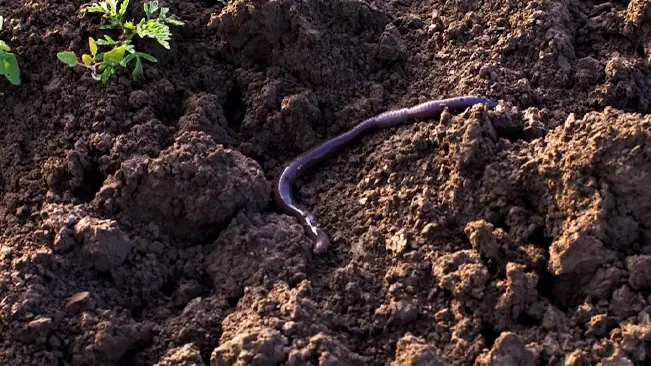
Soil is a living ecosystem teeming with beneficial microorganisms, including bacteria, fungi, and earthworms. Tilling disrupts these microbial communities, breaking apart fungal networks and killing or displacing other soil organisms. The disruption of these symbiotic relationships can hinder plant growth and reduce soil fertility.
Weed Seed Germination
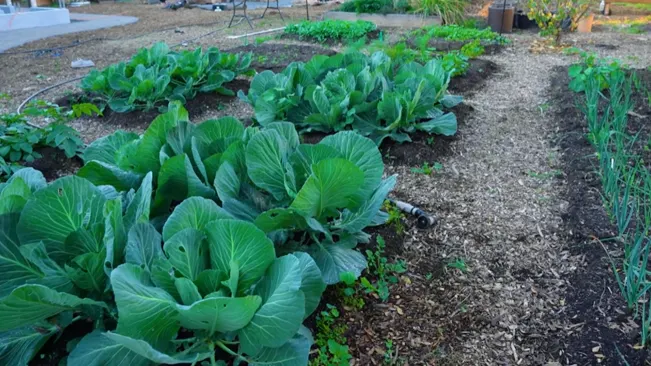
While tilling can help control existing weeds by burying them, it can also bring dormant weed seeds to the surface, giving them the light and space they need to germinate. This can lead to increased weed pressure, requiring more labor or chemical inputs for control, which can further impact soil health and the environment.
Greenhouse Gas Emissions

Tilling increases the rate at which organic matter decomposes, releasing carbon dioxide, a greenhouse gas, into the atmosphere. This contributes to the problem of climate change by reducing the soil’s capacity to sequester carbon. Additionally, the use of heavy machinery for tilling can contribute to fossil fuel consumption and exhaust emissions.
Potential Alternatives

In light of these downsides, many farmers and gardeners are turning to no-till or reduced-till practices, which aim to minimize soil disturbance. These methods often involve leaving crop residues on the surface, using cover crops, and direct seeding into undisturbed soil. While transitioning to no-till can be challenging and may not be suitable for all situations, it offers a way to mitigate many of the negative impacts of tilling, promoting long-term soil health, and sustainability.
Why Did I Till?
Deciding to till a garden is not a step taken lightly, especially given the potential downsides of tilling. However, certain soil conditions and compositions necessitate this approach to create a hospitable environment for plant growth. For instance, in gardens with heavy clay or compacted soil, the lack of air and water penetration can severely limit root development and, consequently, the overall health of the plants. Tilling in such scenarios breaks up the compacted layers, allowing for the incorporation of organic matter which improves soil structure, enhances drainage, and makes the soil more amenable to plant life. This is particularly crucial in new garden spaces or areas where the soil has been degraded or left uncultivated, presenting an inhospitable environment for planting.
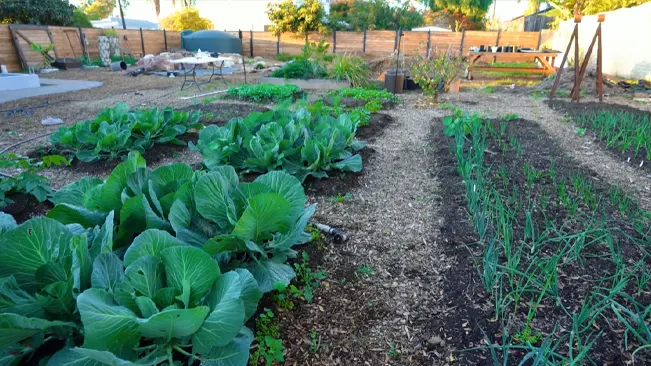
The act of tilling also serves as an effective means to thoroughly mix in soil amendments. Whether it’s compost, manure, lime, or other soil enhancers, tilling can evenly distribute these amendments throughout the soil, correcting deficiencies, adjusting pH levels, and significantly boosting the organic matter content. For gardeners dealing with poor soil quality from the outset, tilling offers a quick method to enhance soil fertility and structure, laying the groundwork for a successful and healthy garden. This is an essential step in transforming nutrient-poor soil into a rich, productive growing medium that supports vibrant plant growth. Beyond soil improvement, tilling can also play a role in weed and pest management, especially in cases of severe infestations or when dealing with certain soil-borne pests. By turning the soil, tilling can bury existing weed seeds deep enough to prevent germination and disrupt the life cycles of pests, providing a clean slate for new plantings. While this benefit is often short-term and must be weighed against the potential for disturbing dormant weed seeds and beneficial soil organisms, it can be a strategic move when establishing a new garden. This initial disruption can facilitate the removal of unwanted vegetation, clear the area for planting, and ensure a more uniform incorporation of vital amendments, setting the stage for a thriving garden ecosystem.
How To Use A Tiller: Step By Step
Step 1: Starting the Tiller
Before you begin, position the tiller at your intended starting point, making sure the area is clear of any debris or obstacles. Safety is paramount, so a quick check to ensure the surroundings are conducive to tilling is crucial. Then, proceed to turn the tiller on by locating the lever and flipping it from the ‘Off’ to the ‘On’ position, setting the stage for ignition.
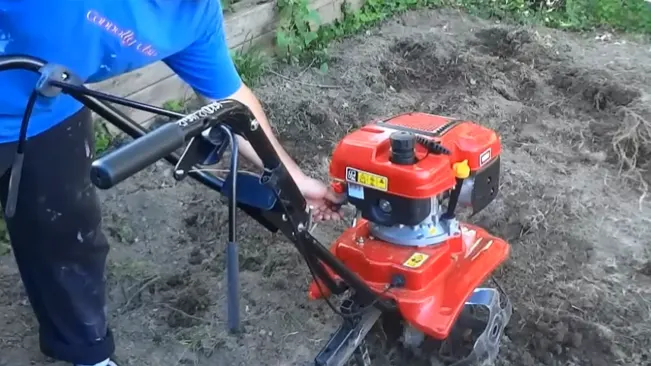
To start the engine, engage the choke by pulling on the choke lever; this is especially necessary if the engine is cold. Once the choke is engaged, pull the start cord firmly to ignite the engine. As the engine comes to life, remember to push the choke handle back in to disengage the choke, ensuring the engine runs smoothly as you start tilling.
Step 2: Engaging the Tines
With the engine running, it’s time to engage the tines, which are the blades that will churn and aerate the soil. The tiller typically has two handles that control the tines; pulling these handles down will start the rotation of the tines, preparing the tiller to move forward and break the soil. This action is the first step in the physical tilling process, marking the transition from preparation to action.
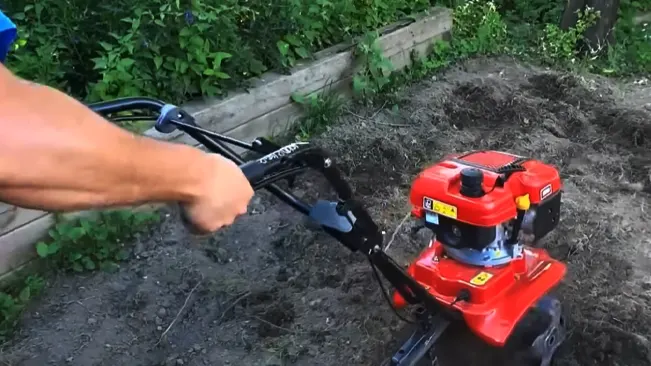
As the tines begin to spin, the tiller is ready to be guided through the soil. The handles not only engage the tines but also help steer the tiller. It’s essential to grip the handles firmly as the tiller may jerk or respond abruptly when it encounters tough soil or rocks, requiring a steady hand to maintain control.
Step 3: Controlling the Tiller
Controlling the depth at which the tiller operates is crucial for effective tilling. By maintaining steady pressure on the handles, you can control how deep the tines dig into the soil. For deeper tilling, allow the tiller to remain in one spot for a moment, letting the tines churn deeper into the earth. Conversely, to keep moving forward, slightly lift the handles upwards, releasing the pin that holds the tiller in place, allowing for forward movement.
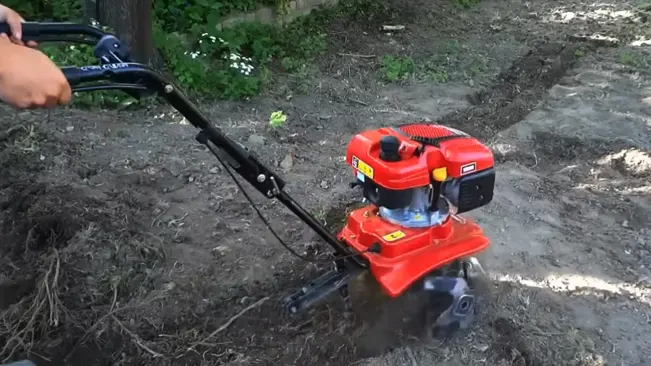
Directional control is another aspect of tilling that requires mastery. Maneuvering the tiller in the desired direction involves a combination of lifting and tilting the handles. For example, to make the tiller curve to the left, you would pull up on the right handle and tilt it to the left. This nuanced control allows for precise tilling, enabling you to navigate around obstacles and till specific garden areas effectively.
Step 4: Mastering the Tiller
Becoming proficient with a tiller takes practice. It’s advisable to start in an inconspicuous part of your garden to get accustomed to the tiller’s handling, particularly if you’re new to tilling or using a new machine. This practice will help you understand how the tiller responds to different soil types and conditions, which is invaluable for efficient tilling.
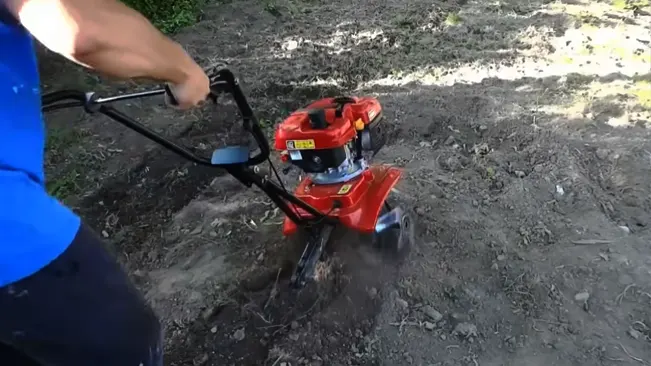
Adjusting your technique and the tiller’s settings can also make a significant difference in your tilling experience. Finding the right balance between depth control, speed, and directional handling can transform tilling from a challenging task to a manageable and even enjoyable garden activity. Remember, each tiller model may have its peculiarities, so taking the time to understand your specific machine is well worth the effort.
Step 5: Turning Off the Tiller
After completing your tilling, turning off the tiller safely is essential. Never attempt to clean the tines or perform any maintenance without ensuring the tiller is completely powered down. This safety measure prevents accidental starts, which could lead to injury or damage to the tiller.
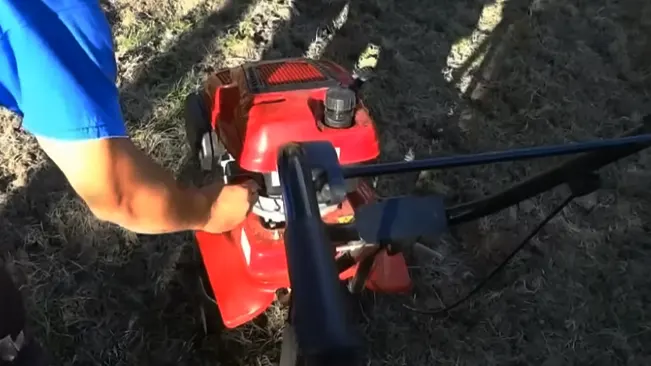
To power down the tiller, locate the on/off knob or switch and turn it to the ‘Off’ position. This simple but crucial step ensures that the tiller is safely deactivated, allowing you to perform any necessary post-tilling activities, such as cleaning or maintenance, safely and effectively.
Conclusion
In conclusion, tilling is a significant agricultural and gardening practice aimed at preparing the soil for planting by improving its structure, aeration, and nutrient availability. While it offers numerous benefits such as enhanced soil conditions, better weed management, and the incorporation of organic matter, it’s crucial to approach tilling with mindfulness due to potential drawbacks like soil compaction, erosion, and harm to soil microorganisms. The decision to till should be balanced with considerations for long-term soil health, often leading practitioners to explore less invasive methods such as minimal tillage or no-till gardening. By judiciously employing tilling within a broader soil management strategy, gardeners and farmers can support vibrant plant growth while safeguarding the intricate ecosystem beneath our feet.
FAQs
1. What is tilling and why is it important?
Tilling is the process of turning over and breaking up the soil to prepare it for planting. It’s important because it improves soil aeration, helps control weeds, facilitates the mixing of organic matter, and creates a more favorable soil structure for seed germination and root growth.
2. Can tilling be harmful to the soil?
Yes, excessive or improper tilling can disrupt soil structure, harm beneficial soil organisms, lead to soil compaction and erosion, and decrease soil fertility over time. It’s important to till only when necessary and consider gentler soil preparation methods.
3. What are the alternatives to traditional tilling?
Alternatives include no-till or reduced-till gardening and farming, which minimize soil disturbance, cover cropping to naturally enrich the soil, and mulching to suppress weeds and maintain soil moisture without turning the soil.
4. How often should I till my garden?
The frequency of tilling depends on various factors, including soil condition, crop rotation, and personal gardening practices. Some gardeners till once a year, while others may till less frequently or opt for no-till methods.
5. What’s the best time to till the soil?
The best time to till is when the soil is moist but not wet, typically in early spring before planting or in the fall after the growing season ends. Tilling wet soil can lead to compaction and poor structure, while very dry soil can be hard to work with.
6. How deep should I till my garden?
The depth of tilling should generally not exceed 8-12 inches, as deeper tilling can bring dormant weed seeds to the surface and disrupt the natural soil layers. The specific depth can vary based on the needs of your garden and the plants you intend to grow.
7. What tools are needed for tilling?
For small gardens, hand tools like a garden fork or spade may suffice. Larger areas might require a powered tiller, which can range from small, electric models suitable for home gardens to larger, gas-powered tillers for more extensive areas.

Joel Cunningham
Forestry AuthorI'm Joel Cunningham, an expert in pruning and weed management with over a decade of experience. My skills are rooted in formal training and extensive practice, focusing on advanced pruning techniques and efficient weed control. I'm known for my quality work, precision, and deep understanding of plant health and soil dynamics. My contributions extend to educational initiatives where I share sustainable practices and advice, establishing myself as a reliable and authoritative figure in the gardening community.

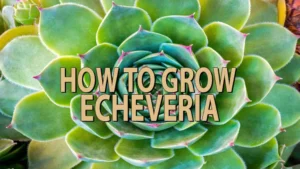
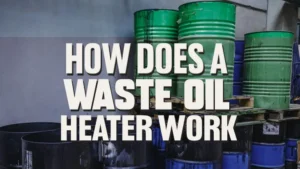
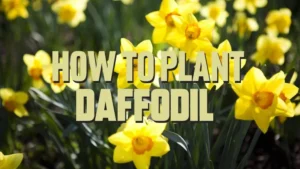
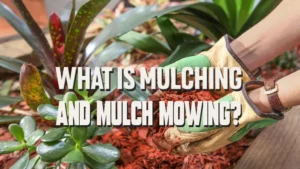
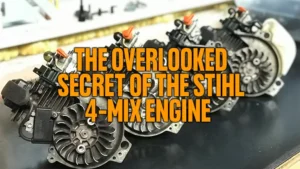

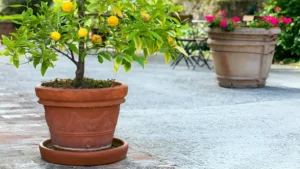
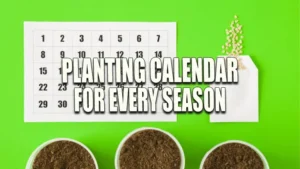
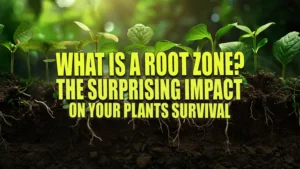

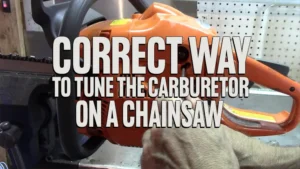

Leave your comment